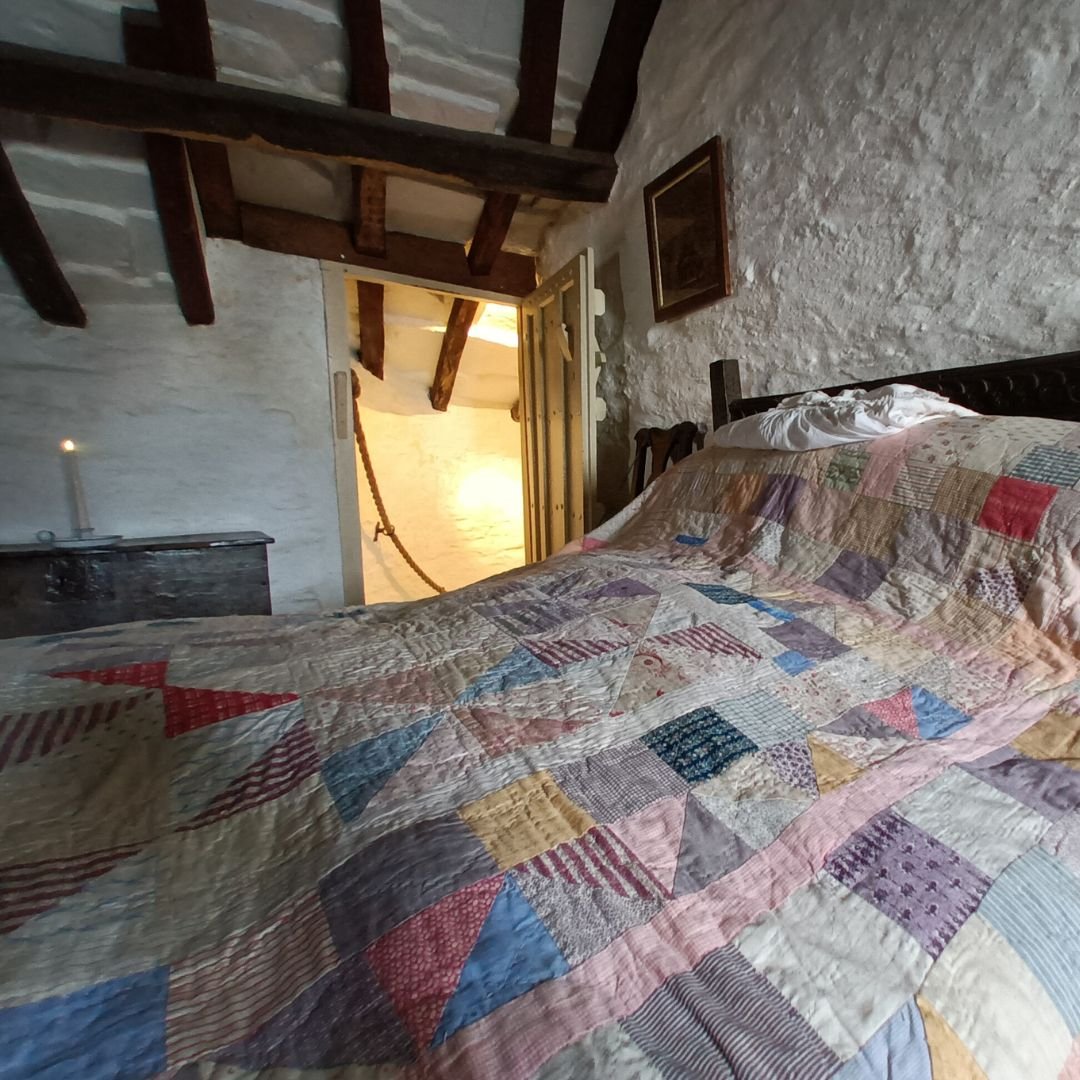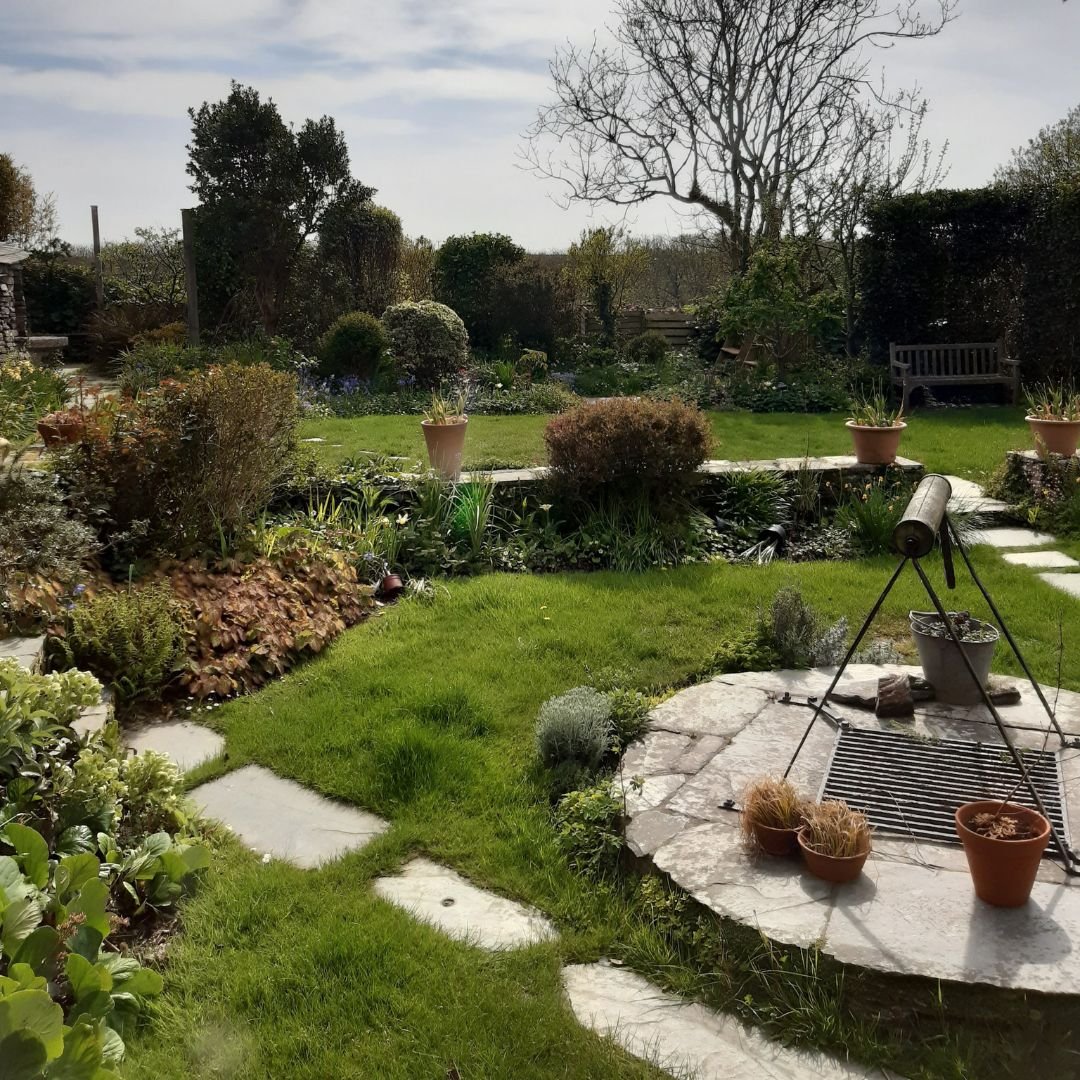Tintagel Old Post Office: 14th-Century Stone Building
Tintagel Old Post Office is a stunning 600 year old stone house in Tintagel, Cornwall.
The National Trust, who acquired the property in 1903, call it one of their ‘most delightful medieval buildings, enhanced by a cottage garden.’
Tintagel Old Post Office was first built as a farmhouse during the medieval period.
Slowly modified over the centuries, it became more fashionable than functional.
The house has served many purposes over time, but it has always been a home.
Its final use was as the letter-receiving office for the village during the 1870s.
According to the National Trust, the house was first built in the late 14th century as a thatched house of three rooms with a through-passage.
The building would originally have been a single storey dwelling, open to the roof, and would have housed livestock in the northern partition.
A central hearth in the hall would have offered warmth and provided smoke that would seep through the thatch above, keeping the building dry and killing off woodworm, preserving the wooden frames.
The main phases of redevelopment to the building took place during the 16th and 17th centuries.
Local brown slate was used for the roof instead of thatch.
The timber panelling in the rooms was replaced with stone and central chimney stack and fireplace were also added.
Adding the chimney meant that the building was now smoke-free and bedrooms could be put in at either end, with the hall left open to the roof, making the building a hall house.
Further additions and extensions were added over the following centuries to the existing building layout, creating a mixture of architectural styles which resulted in the unusual look the house has today.
The house was used for several businesses during the Victorian period, all of which were a side-line to farming.
The building is recorded as having been used as a greengrocers, dressmakers, draper’s, and shoemakers.
The final use of the building was as the letter-receiving office for the village, sometime between 1870-1878.
By the late 19th century, it was in a bad state of repair and was in danger of being demolished.
Thankfully, it was saved by a local group who bought the house from an auction, having raised the funds to buy it.
Following its rescue, various artworks of the house were sold, and the proceeds used to pay an Arts and Crafts architect to carry out essential maintenance and restore it to its former glory.
Knowing the Old Post Office would need long-term care, the group appealed to the National Trust who agreed to look after the house and acquired it for £200 in 1903.
If you visit the house today, you will see a variety of bedspreads, some dating back to the Victorian period.
The Old Post Office is open to visitors for just £7 per adult (free for National Trust Members).
You can book tickets online from March 2024.
Writing on TripAdvisor, one recent visitor said: “Tagged this onto a day out in Tintagel and so glad we did!
”It’s a quaint little National Trust property with a small but perfectly formed garden.
”We particularly liked the model of the post office in the garden.
”Only caveat is steep and narrow stairs to the bedrooms and a weird ladder type stair to the gallery which is harder to come down than go up.”
Another person added: “We were enamoured by just how small the property is.
”Ceilings where you have to bow your head and teeny tiny steps leading to quaint upstairs bedrooms. How I wanted to pull back the bed cover and snuggle up.
”Those feeling claustrophobic can take a meander through the cottage garden, at the back of the building and enjoy breathtaking views of the landscape which lies beyond.
”You may not be able to post any letters in this Post Office, but you can certainly escape to a simpler time and idle away an hour or so, soaking up the mise en scene.”
One of our highlights of the building in the ancient roof.
The slate roof was added in Tudor times and was restored in 1992.
Thanks to public support, the National Trust can continue to care for it 500 years on.
Originally straight, the roof has warped under the immense weight of the large, locally-quarried rag slates.
The cottage garden
The garden that you see today has been laid out in a Victorian cottage garden style.
This style was chosen as the building’s local name has been, The Old Post Office, for over 100 years and refers to a period in the late 19th century when it served the community as a letter receiving office.
This name has become as crucial to its identity as the wiggly roof.
Because of this and its small size, the National Trust decided to anchor the garden to its Victorian identity by creating a Victorian cottage garden.
The Old Post Office garden is romantic to its core, small in scale, cosy and protected from the unpredictable weather by hedges and walls.
It also has a tranquil feel in contrast to the busy high street of Tintagel that has drawn visitors since the Victorian era.
The garden is planted to actively encourage wildlife.
The seasonal variety of the garden provides nectar and pollen for insects and nesting material for birds.
Butterflies, bees and bats are regular visitors and there are also visits from rabbits and moles.
The compost area provides an ideal environment for slow-worms to nest and lay their eggs.
The garden has two small lawns, two benches and seating near the back of the garden by the millstone. There are also several low walls to sit on.
Picnics are allowed and you are welcome to bring pasties, ice-creams and the like from the many food outlets in the village into the back garden.
The lawn is a real sun trap and a nice place to relax, with one of Cornwall's oldest houses as the backdrop to your lunch!
However, the National Trusts says that unfortunately, they cannot allow any animals other than assistance dogs into the house or garden.
Some highlights
The Parlour: During the medieval period, this room served as the shippen - the part of a longhouse where you would keep cattle.
As time moved on and the lifestyle of the inhabitants changed, this room was transformed into a private parlour, along with a sizeable fireplace creating a warm, cosy space.
The Hall: The hall is open up to the roof and shows the original height of the early building.
The main features of this room are the mid-17th-century table outshot and the early 17th-century fireplace with later Victorian cloam oven inserted into it.
Cloam is a name given to clay ovens which were normally used for baking bread.
This type of oven holds heat and creates a good even temperature which allows the bread to cook without burning.
A 17th-century spiral staircase reflects the trends of the time and leads to the south bedroom.
The mattress on the bed is supported by ropes.
According to the National Trust, these ropes provide good ventilation around the mattress and helps prevent damp and mould.
The ropes require tightening occasionally to prevent the mattress sagging. It is thought that this is where the phrase 'sleep tight' comes from.
An early postbox: Inserted to the exterior wall just outside the post room is a rare Victorian post box.
This type of post box was only in production for two years due to a design flaw as it did not have a cover over the letter slot to prevent rain water getting inside or to shelter letters when they were being posted.
At the Old Post Office a slate cover was installed above the post box to prevent the post from getting wet.
The Post Room: During the 1870s, the building was used as the letter-receiving office for the village and Victorian postal equipment can be seen here.
Previously, the building has been home to a variety of different businesses from a greengrocers, dressmakers, drapers and shoemakers.
These businesses probably operated from this small room (at different times) whilst the rest of the house remained a family home and the land a working farm.
If you’d like to visit this beautiful gem in Cornwall, you can pre-book tickets in advance via the National Trust website.
Please be aware that Tintagel Old Post Office is closed for the winter while they carry out essential building maintenance and conservation cleaning.
The house and garden will re-open on Saturday 9 March 2024.
The post office is just a short distance from Tintagel Castle, which is the village’s main attraction.
The castle is famously known for its association with the legendary King Arthur, a figure from medieval mythology and literature.
While the actual historical connection between King Arthur and Tintagel is debated among scholars, the site's romantic and legendary associations have made it a popular tourist destination.
Completed in 2016, an 8-foot-tall (2.4 metre) bronze sculpture of King Arthur was commissioned by English Heritage as part of their visitor experience.
Along with other installations, the idea is to bring the history and legend of the site to life in a way that will inspire visitors.
It took over six months to design, sculpt and cast the sculpture.
The sheer size and weight of the statue meant that when it was installed in April of 2016 it was actually easier to fly it in by helicopter rather than lug it up and down the hundreds of steps over to the island.
The sculpture was given the title "Gallos", which is derived from the Cornish word for power.
Tintagel Castle is situated on Cornwall's north coast, between Padstow and Bude.
You will find pay and display car parks in Tintagel Village, 600 metres away from the site.
The castle is run by English Heritage, and tickets must be booked in advance via their website.
If you enjoyed this blog post, please follow Exploring GB on Facebook for daily travel content and inspiration.
Don’t forget to check out our latest blog posts below!
Thank you for visiting Exploring GB.






























